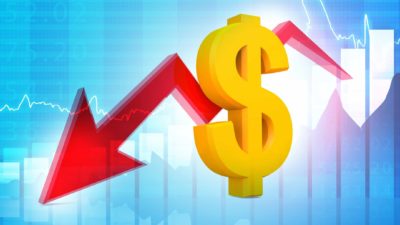The S&P/ASX 200 Index (ASX: XJO) is having another top day today as the market opens. At the time of writing, the ASX's flagship index is up 0.96% to 6,994.4 points. That's a 15-month high for ASX 200 shares. It's also tantalisingly close to the psychologically potent 7,000 points mark, which the ASX 200 crossed for the first time ever in January of last year. Of course, the coronavirus pandemic made short work of that high just a month or so later, and we haven't seen the ASX 200 climb back above 7,000 points since. But on the index's recent momentum, it might not be too far off.
It's a decisive move upwards for the ASX 200. The index had, until last week, been stuck in a rut of sorts since late November. That's when upward momentum for ASX 200 shares stalled after a strong October. In fact, since 25 November, the ASX 200 has bumped along in a band between 6,700 and 6,900 points. But we are well above that band today.
So, why is the ASX 200 now suddenly pushing higher after months of going sideways? There are a couple of factors at play.
Why the ASX 200 is pushing higher at last
The first is positive economic momentum here in Australia. By all accounts, the Australian economy is recovering nicely from the coronavirus-induced recession last year, the first recession Australia has seen in near-three decades. The Reserve Bank of Australia (RBA) has flagged that it will not raise interest rates until 2024, and will also allow inflation to run somewhat before they would consider trying to reign it in. This is all highly supportive economic policy.
The vaccine rollout is progressing despite a few witches and shortages. And we have just had confirmation of a trans-Tasman travel bubble with New Zealand that should result in a tourism boost for both countries after a year of effective travel bans.
All of this is conducive to higher ASX shares.
US markets lead the way
Secondly, what is happening in the United States is also probably helping ASX 200 shares. The rollout of coronavirus vaccines in the US is going very well. According to the US Centers for Disease Control and Prevention (CDC), 42.4% of adults over 18 have now received at least one shot of a vaccine at the time of writing. That's obviously great news for the US economy. The US share markets are reflecting this optimism as well by hitting new all-time highs. Just this month, the flagship US S&P 500 Index (INDEXSP: .INX) crossed the 4,000 points threshold for the first time ever last week.
Further, the big spending plans of the new Biden administration are also supporting markets. President Biden is now trying to push a mammoth infrastructure spending bill through congress after the recent passage of the massive US$1.9 trillion American Rescue Plan last month. Markets appear to be cheering all of this on, which is probably spilling over to our own ASX. Remember, US markets hit their pre-COVID highs in August last year. The ASX 200 is still chasing its own high watermark.
But this could soon change if things keep going the ASX 200's way. And based on today's moves with ASX 200 shares at a 15-month high, that's what investors are expecting.









